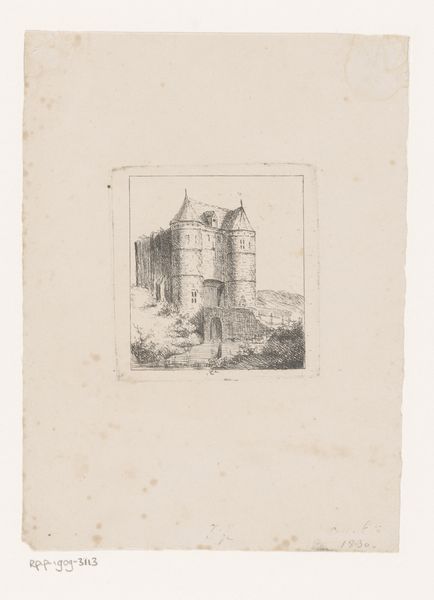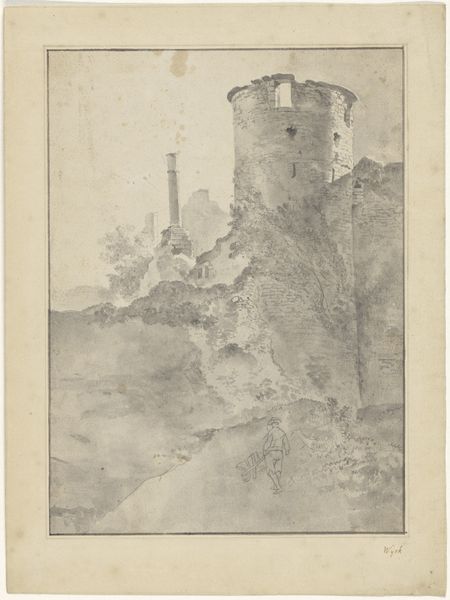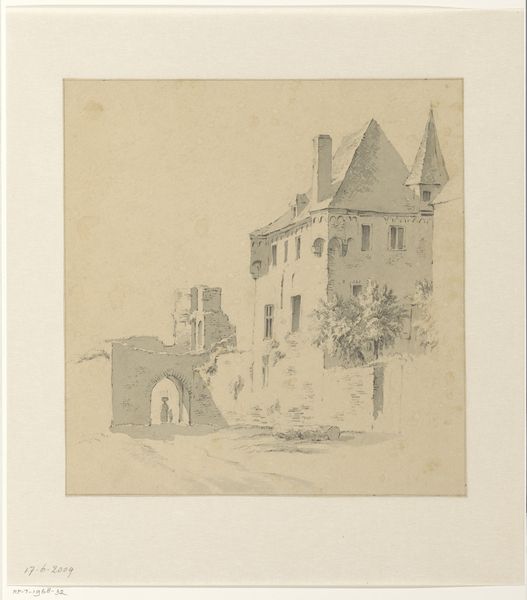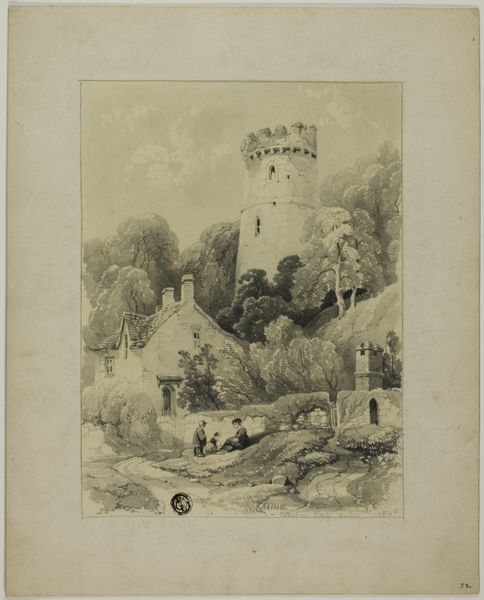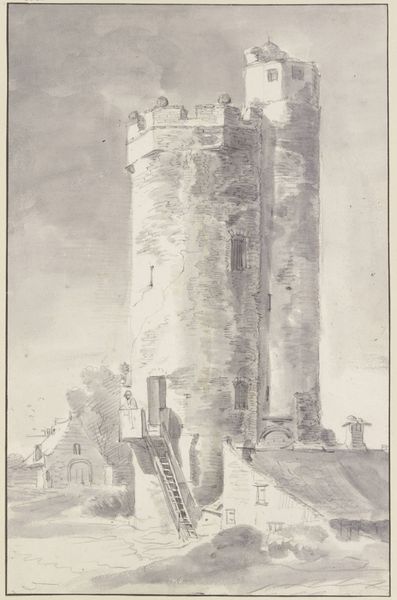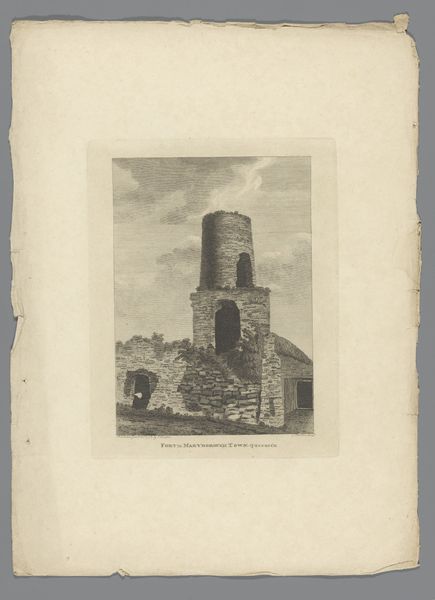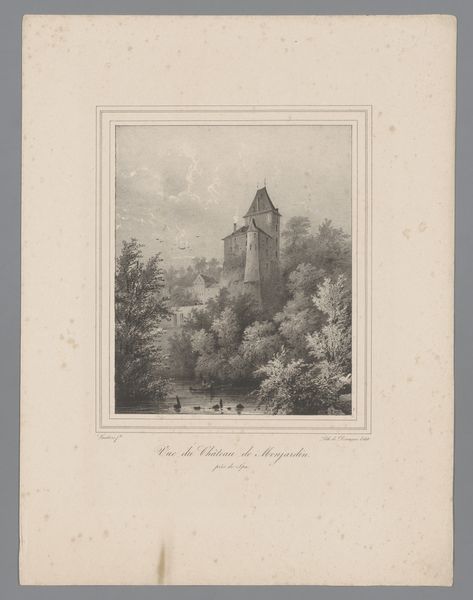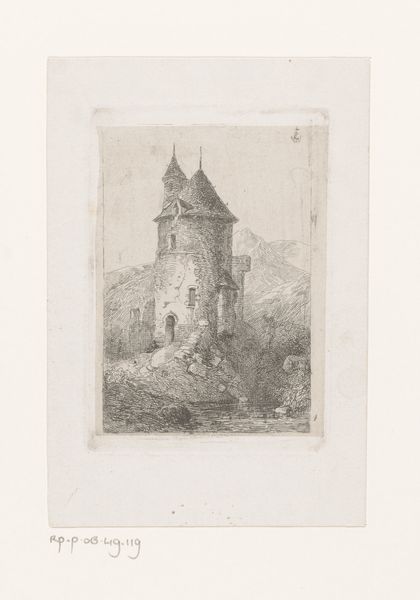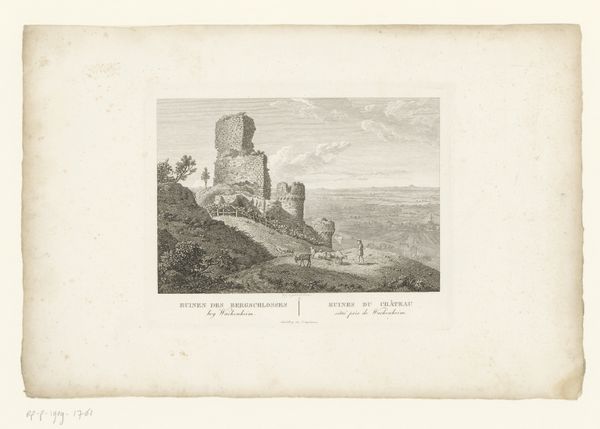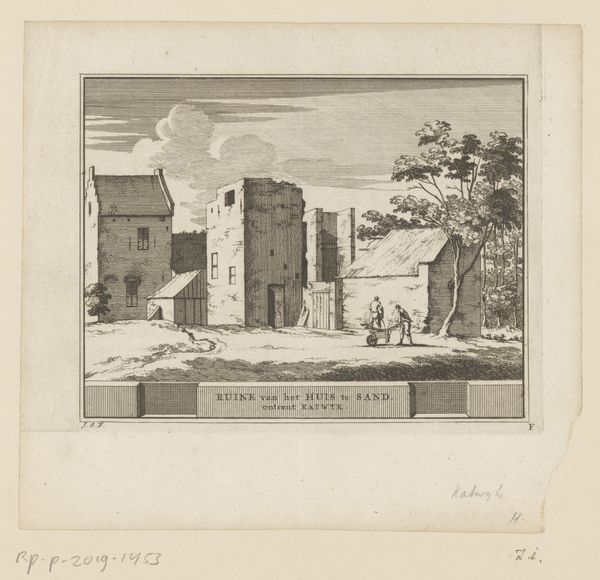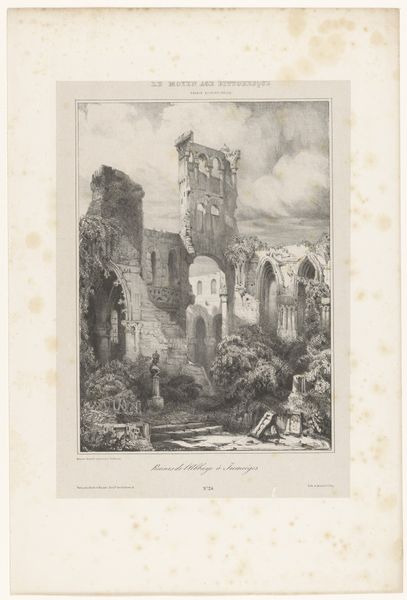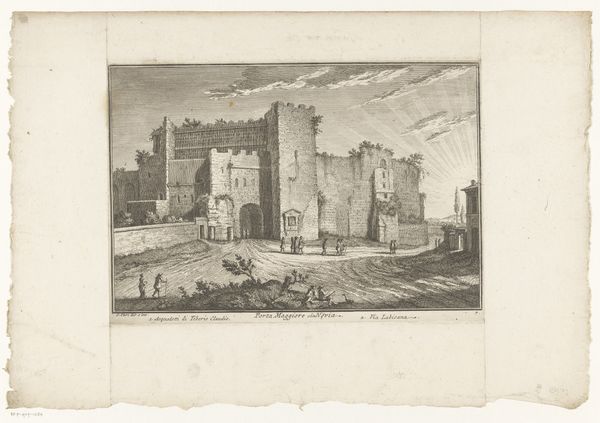
print, etching, engraving
# print
#
etching
#
old engraving style
#
landscape
#
engraving
#
realism
Dimensions: height 311 mm, width 241 mm
Copyright: Rijks Museum: Open Domain
Curator: Let’s consider “Toren in duinlandschap,” a print made sometime between 1812 and 1879, by Cornelis Gerrit Verburgh. It's currently held at the Rijksmuseum. My initial reaction is that it feels stark, somehow solitary, despite the figures in the foreground. Editor: It’s true. The tower does dominate. We must consider how these structures in the landscape served as points of power. The composition, positioning the tower centrally and using strong contrasts, speaks to societal hierarchies in its time. How might this work reinforce ideas of governance? Who was allowed access, both literally and figuratively, to these structures of authority? Curator: Right, the tower acts as a symbol. Verburgh was working during a time of shifting power dynamics, with increased urbanisation, so these imposing towers might represent the old guard, a stark contrast against the encroaching societal changes. How do we read the landscape itself? Editor: The choice to depict it in etching and engraving, that interplay of light and shadow, is revealing. Those deep blacks aren't just aesthetic. Think of the ecological implications. Consider, for example, class relations to open spaces, access, and power related to it. We see ordinary people at its base – maybe they find joy in being at its feet, or perhaps we see something more complicated. Curator: Complicated indeed. There’s an inherent tension between this dominating tower and the minute human figures. Its function also contributes to its meaning – was this an observation tower, or just a marker? It begs the question: Who exactly is doing the “watching”, and from what perspective is it being constructed for them? Editor: Absolutely. How does its symbolism reflect prevailing social theories concerning the commoner’s role at the time? Is it glorifying or questioning those systems? What’s powerful is its ability to evoke those dialogues still today. Curator: It makes you reconsider your relationship to history and the power dynamics still at play today. Editor: For sure. It really underscores that public role that art plays and continues to.
Comments
No comments
Be the first to comment and join the conversation on the ultimate creative platform.
